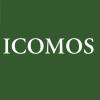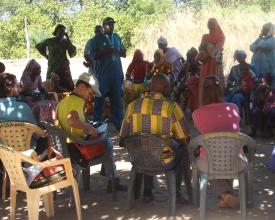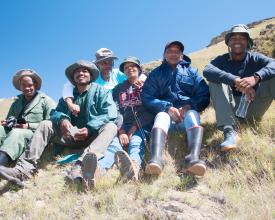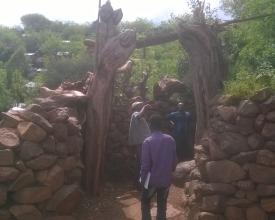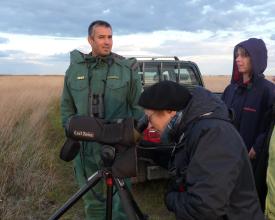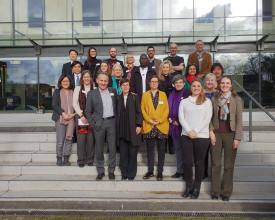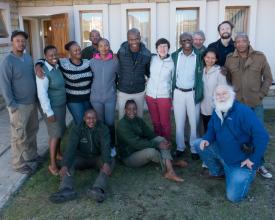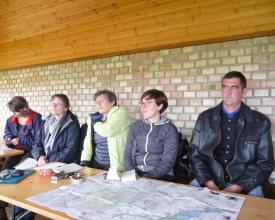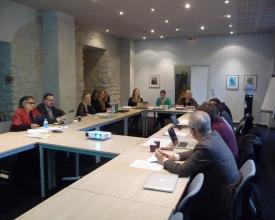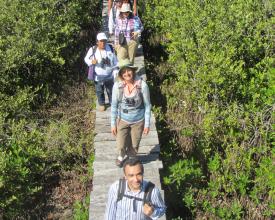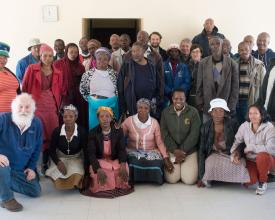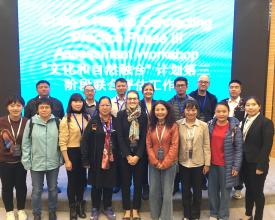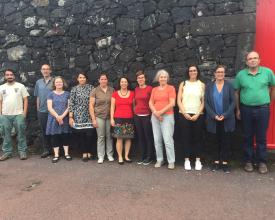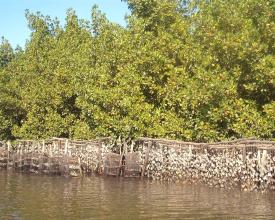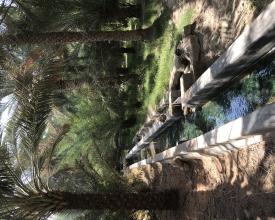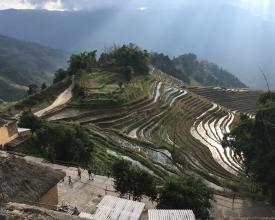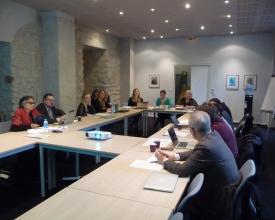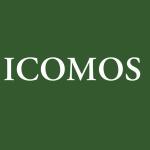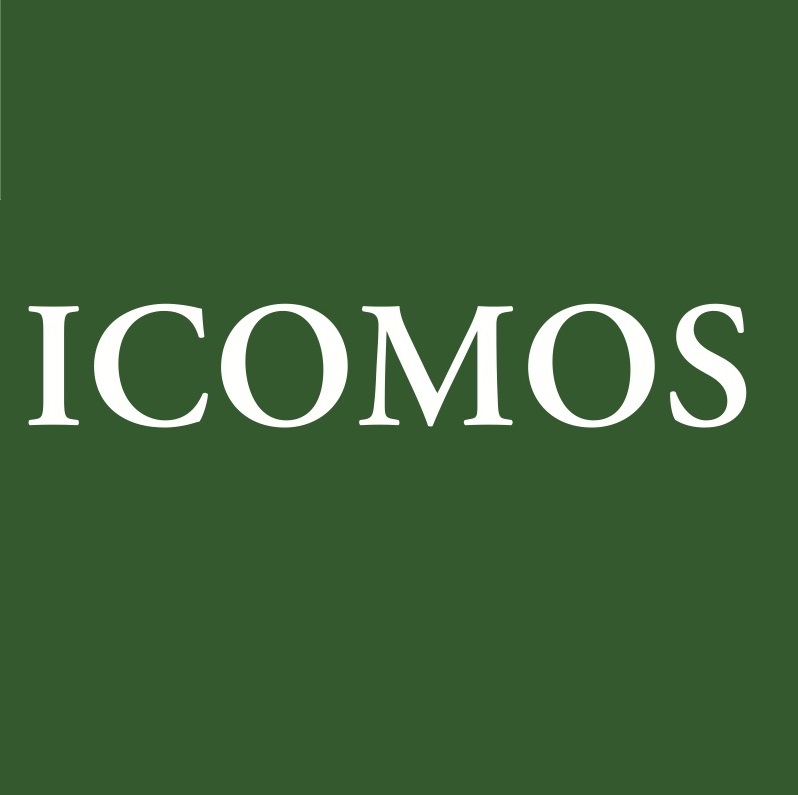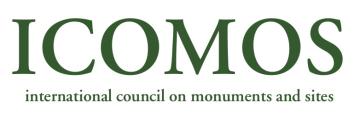
Connecting Practice Project, bridging the gap between nature and culture in World Heritage
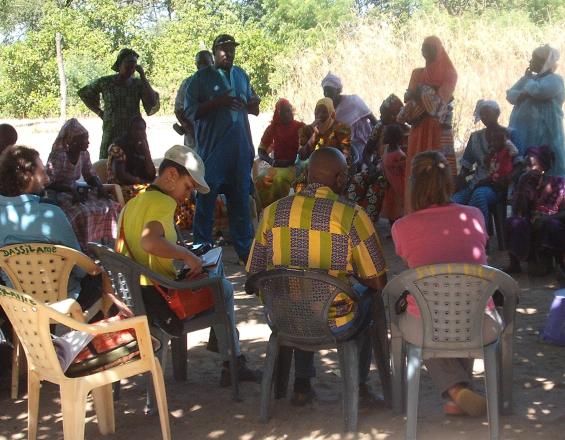
Since 2013, ICOMOS and IUCN have been conducting Connecting Practice, a joint project aimed at developing new methods and conservation strategies that recognise and sustain the interconnected character of the natural, cultural, and social values of World Heritage sites. The project aims to develop practical strategies for a more integrated conservation approach and to improve coordination and deepen collaboration between cultural and natural sectors to achieve better conservation outcomes. A more ambitious goal is to gain a deeper understanding of interconnections of culture and nature and influence shifts in the conceptual and practical approaches for values assessment, governance and management within the implementation of the World Heritage Convention and beyond. This collaborative project is designed to learn from practice by having interdisciplinary teams work with staff and partners from World Heritage sites that illustrate the interlinkage of cultural and natural heritage.
Context
Challenges addressed
A main challenge is that each property has unique natural, cultural and social values, with management, governance and conservation frameworks dependent on the setting and organisation of each site. Ensuring a holistic view of all values (OUV and other values) and attributes/features at site and institutional level, is often a challenge.
Connecting Practice follows an experiential learning approach, creating short, intense experiences during field visits. Creating accessible resources containing information and knowledge collectively produced during field visits is often difficult. Ensuring respectful and equal interaction and learning opportunities for participants in fieldwork and site visits involves the inclusion of local authorities, national focal points, site managers, and colleagues from both natural and cultural heritage backgrounds.
Feedback indicates high expectations for the project and managing these growing expectations will be a challenge for future project phases.
Location
Process
Summary of the process
The solution centres on increased collaboration among communities and organisations to ‘bridge the divide’ between cultural and natural values and encourage holistic management, governance and conservation strategies at World Heritage sites.
Enhanced cooperation and strengthened international partnerships, particularly for ICOMOS and IUCN (BB1), with common Terms of Reference, combined fieldwork site visits, and a joint final report, encourages nature/culture interaction at international and local levels.
The use of diverse teams (BB2), including ICOMOS and IUCN representatives, local and regional partners, site managers and community groups, fosters a network of cooperation and widens the scope of discussion.
Collaborative fieldwork promotes increased integration of diverse groups (BB3), creating a more holistic understanding of sites while supporting the development of improved management strategies and creating more collaborative approaches to culture and nature at all levels.
The Commentary on Keywords (BB4) supports collaborative work by creating generally accepted terms and concepts. This helps address misunderstanding resulting from various meanings in different disciplines which hinders a common approach to understanding.
Building Blocks
Strengthening IUCN-ICOMOS and other Institutional partnerships
Connecting Practice is the first jointly-managed project of ICOMOS and IUCN under the World Heritage Convention, promoting collaboration for the nature/culture interconnection at an institutional level to encourage more holistic, integrated approaches to site management and understanding. The use of joint field visits was a distinct change from previous ICOMOS and IUCN missions, allowing a more experimental approach to understanding the interconnection. This involved field teams with ICOMOS and IUCN representatives, the creation of common Terms of Reference, coordinated planning and organisation of site visits, and preparing a final, combined report, resulting in improved collaboration between ICOMOS and IUCN at an institutional and local level.
Phase III involved the FAO and their Globally Important Agricultural Heritage Systems project. This created further networks and integration among international players, and allowed the exploration of potential synergies with other international designations by considering two properties which were both GIAHS and World Heritage sites. This resulted in a richer discussion and professional exchange of common conservation and management priorities and systems, challenges and potentially mutually reinforcing responses.
Enabling factors
Ensuring open dialogue and shared information among all partners and collaborators is an essential component. In Connecting Practice, the participation and leadership of ICOMOS and IUCN, as well as the active engagement of natural and cultural international heritage networks in all aspects of the project, contributes to global heritage dialogues and helps to create operational instruments throughout professional networks and individual organisations.
Lesson learned
Key lessons include:
1. The creation of common Terms of Reference and objectives;
2. The use of one, joint visit for all participants (including ICOMOS and IUCN representatives, local focal points, site managers, and other institutional partners);
3. The creation of a collaborative, final report to maintain a fair, equal exchange of knowledge between the nature/culture sectors and local and international colleagues;
4. Ensuring an equal mixture of diverse culture and nature expertise and participants who have accurate knowledge of WH system, including local site management.
Strengthening networks for dialogue and coordination encourages an enduring shift in thinking and lasting changes in attitude and practices, particularly in the institutional areas of ICOMOS and IUCN.
Building international interdisciplinary and multidisciplinary teams
The use of these interdisciplinary and multidisciplinary teams creates richer dialogues and widens the scope of discussion in a project such as Connecting Practice, while also emphasising different contexts and approaches to conservation and management practices.
Throughout all phases of Connecting Practice, efforts have been made to expand the fieldwork teams to include participants with diverse professional and educational backgrounds, including archaeologists, agronomists, landscape architects, geographers, ecologists, anthropologists, geologists, natural and social scientists. In most cases, these professionals have previously worked for or collaborated with IUCN and ICOMOS, often with a World Heritage focus. Each phase collaborated with and included site managers, local heritage organisations and national/regional representatives.
Phase III in particular involved larger groups of practitioners and international partners in contemporary fields to investigate new facets of the interconnection between nature and culture and to build alliances across international heritage programmes. This included the integration of professionals engaged with the GIAHS programme, namely an agricultural engineer and an ecologist, into the fieldwork teams.
Enabling factors
Success for this building block depends on direct and consistent interaction between multi- and inter-disciplinary partnerships and relationships. This includes ensuring that local focal points and experts are directly involved; using workshops as platforms for discussions, ongoing feedback of activities, and reflections on lessons learned; creating common Terms of Reference to support a collaborative focus; participating in fieldwork and discussions during site visits; and collaborating in writing a final, common report.
Lesson learned
- Ensuring diverse backgrounds for participants and partners, including local representatives, site managers, and experts, allows for holistic, meaningful discussion and greater understanding of the site.
- Diverse teams provide varied views and offer new perspectives to enrich discussions and help to create a more dynamic and holistic picture of a selected property.
- Workshops encourage collaboration, discussion and increased interaction. In addition to international Connecting Practice workshops, on-site meetings were used to foster broader discussion and more diverse outcomes.
- Common Terms of Reference developed prior to on-site work creates a united focus for specific outcomes and goals. The writing of common reports encourages collective and collaborative discussion among team members, allowing participants to express disparate views and support a common and accepted final product.
- Identified synergies and challenges to a harmonised approach to site conservation should be shared and exchanged collaboratively and equally across all groups to enable collective learning.
Field explorations on World Heritage sites
Fieldwork has been the pivotal activity in all Connecting Practice phases, pursuing the aim of recognising commonalities, establishing linkages, and bridging the nature/culture divide. Fieldwork in all three phases centred on engaging at site level with communities, site managers, heritage practitioners and policy makers.
The project has tested various methods of carrying out field visits. Phase I visits were explorative in nature and used a variety of approaches and working methods at the sites. Phase II focused on creating a consistent, common structure to the fieldwork to identify strategies of generating immediate benefits to the sites. Phase III focuses included: the promotion of biocultural approaches for management and conservation of continually evolving cultural landscapes; the translatability of ‘resilience’ in management responses; and the use of broader partnerships to increase the multi-disciplinary character of the project.
Field visits are critical for understanding sites, generating connections and modifying practices, with each phase providing lessons and themes for subsequent phases. Outcomes from fieldwork create lessons for the development of improved frameworks and strategies applicable to a wider range of World Heritage properties and organisations.
Enabling factors
Joint missions with ICOMOS and IUCN participation, local site management, national/local representatives, and colleagues with diverse educational and work backgrounds, ensures a broad examination of natural, cultural and social interconnections at site-level. Shared planning and preparation, interactive discussions and workshops in the field, and the writing of a collaborative, joint final report supports integration and participation from all team members.
Lesson learned
Identifying and selecting the appropriate sites for investigation and testing are key. The site must have strong natural and cultural values and have the resources and willingness to support a team for a site visit. It requires careful, detailed technical and logistical preparation before, during and after the visit. In addition, such preparation must be tailored and appropriate for each individual site.
Successful fieldwork requires a dedicated team focused on learning about and understanding the values and interconnections at site level. The selection of multi- and inter-disciplinary teammates with diverse professional and education backgrounds, as well as a basic understanding of the World Heritage system, is required.
The clarification of expectations regarding what the fieldwork can and cannot achieve is an important lesson learned. Connecting Practice fieldwork is experimental in that it tests ideas, methods, and approaches through exercises, but is not designed to conduct extensive field research or technical assistance. This is important to clarify to all participants.
Creating a glossary of terms
The multidisciplinary approach taken by Connecting Practice, with its use of representatives from both natural and cultural heritage organisations, as well as local and international partners, has highlighted the differences in interpretation and understanding of applicable terminology and concepts. In many situations, seemingly similar concepts have accumulated slightly different meanings depending on their context. The terminology and concepts used in one disciplinary realm have different meanings in others or, conversely, distinct terms or notions in one realm play a similar function in another. The application of multiple vocabularies can lead to confusion and misunderstanding that can hinder mutual use across disciplines.
Establishing a common ground for terminology was identified as being helpful for the integration of concepts and practices to ensure collective use and understanding. In order to address this need, the Commentary on Nature-Culture Keywords emerged as a result of the work done in Connecting Practice. It is a compilation of terms and concepts divided into three clusters (biocultural approaches, resilience and traditional knowledge), with the goal of creating common understanding and collective use to assist future project activities.
Enabling factors
This building block required the identification and limitation of keywords to a few distinct terms for research which were then grouped into thematic ‘clusters’. This provided an effective way of highlighting connections and overlaps. Investigation of the concepts’ origins and meanings, and their use in different areas of study, assisted in a better understanding of their complexities. As a ‘work in progress’, the Commentary provides flexibility and openness to modification, supplementation and expansion, which is important to its success.
Lesson learned
The Commentary was compiled with the goal of creating a usable glossary of commonly understood terms and concepts for future work. The challenge of creating this was twofold: while these terms are multidisciplinary, evolving and involve complex processes for heritage globally, the document must dissect layers of meanings and terms sufficiently to assist professionals in conceptual aspects of heritage work. The Commentary identifies the many facets of the analysed terms, and potential consequences arising from uninformed use in the heritage field. By developing a preliminary basis on the meaning and origins of these terms, the Commentary aims to create a clearer exchange across disciplines and professionals. As an ‘open’ and ‘intermediate’ document, it will be enriched by additional references and terminologies, and expanded as new words and concepts are explored.
Connecting Practice acknowledges there are limitations, particularly regarding language, as only sources in English were consulted, limiting the range of terms and meanings that other languages may provide.
Impacts
Environmental: Connecting Practice emphasises collaborative efforts to better understand nature/culture duality. Impacts include revision of the Enhancing our Heritage Toolkit to include Cultural World Heritage sites and contribution to the preparation of a joint manual for both natural and cultural World Heritage properties. The project has impacted the nomination process, namely at the Preliminary Assessment stage, where a joint ICOMOS–IUCN World Heritage Panel is envisaged.
Social: Experiential learning has proven valuable for participants and provided distinct guidance for future work, with emphasis on the importance of human interaction and equal, collective learning experiences at site-level. The diverse fieldwork teams have created a broader dialogue with benefits gained from mutual learning experiences and practices. As a think-tank of new concepts and ideas, Connecting Practice has created positive impacts by directly testing working methods and tools for future use by site managers.
Economic: A common barrier to effective integration of natural and cultural heritage is the separation of institutional arrangements. Results produced by the project extend beyond the World Heritage system and can contribute to the integration of nature-culture management practices at heritage sites with multiple designations.
Beneficiaries
Beneficiaries of this solution include site managers, local communities, organisations and independent experts involved in site management and visits; international organisations (ICOMOS, IUCN, FAO, etc.); and the global World Heritage community.
